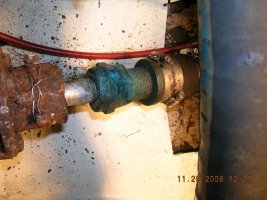You guys can choose to believe what you want. I am the one who actually had this happen to them.
I had a BONE DRY tranny seal, actually my entire engine is BONE dry, and the boat was out of the water so it was NOT spinning and wearing. I sprayed some of the boats to the flange and they inadvertently dripped onto the output flange.
When I came back to the boat the next day to loosen the nuts the entire contents of my transmission (tranny fluid) were in the bilge!! Again nothing moved and the ONLY change was that PB Blaster dripped onto the output flange and "softened", as PB says, or ate, as I say, my seal.
Hansen Marine, the Westerbeke dealer who rebuilt my tranny, said this is certainly NOT the first case they have seen and said it is actually kind of common.
PB Blaster is clearly in the business of selling you product not giving you the whole truth. The word "soften" is a nice way to say yes it will destroy the seal as once a seal is softened it will not harden back up. I spoke with numerous seal manufacturers about this before laying out $1800.00 for a rebuild..
Again, I am supplying this info to help you guys. I still use PB Blaster and feel it is one of the best penetrating oils on the market but you do need to be very, very careful around engine & transmission seals and it is NOT difficult and maybe takes 30 second more of your time to do it right and not jepordize your seal.
Please, please, please be very careful reading the advice on that other thread and understand that "soften" can mean destroy!!! I know because I'm $1800.00 lighter in my wallet!






 If you want to use it to prevent rust there are far better products, if you want to use it to penetrate you'll die before it does anything...
If you want to use it to prevent rust there are far better products, if you want to use it to penetrate you'll die before it does anything...